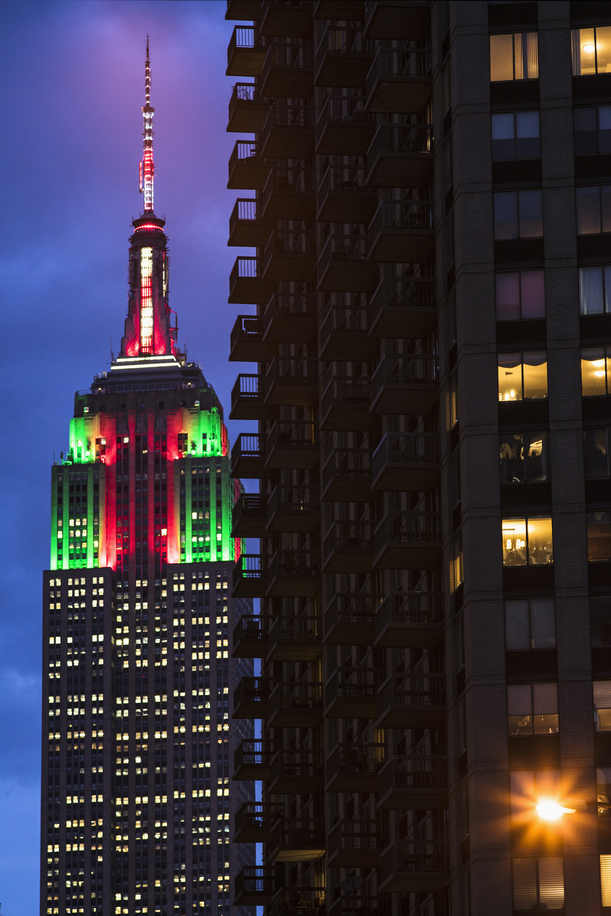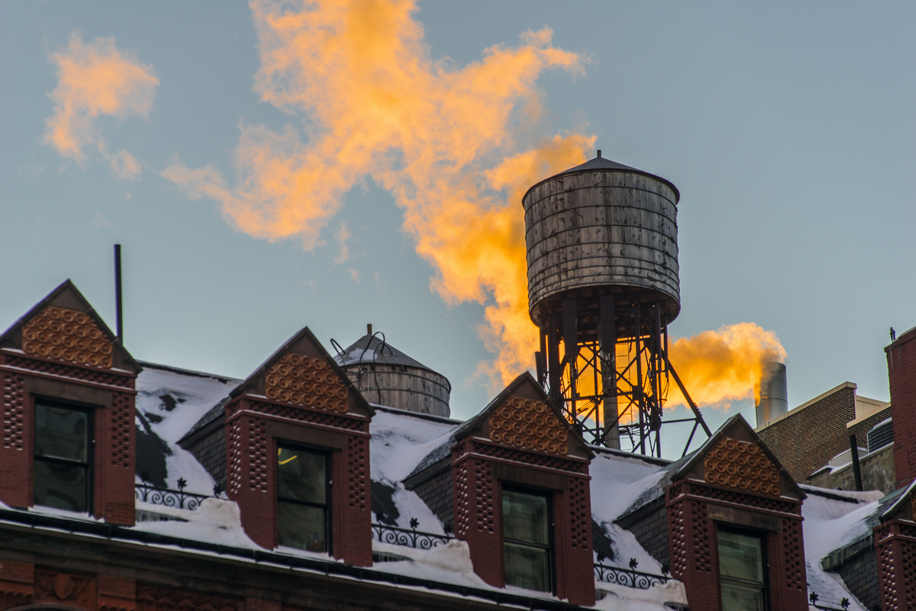This review on using Leica M lenses on the Sony A7r 36mp camera is by Tom Grill (Web | Blog, click on images for larger view):
As a Leica owner, I was immediately intrigued when I saw the first announcements of a full-frame, small, 36mp, mirrorless camera from Sony with the ability of accepting Leica M lenses. It sounded a bit like a Leica aficionado’s holy grail for a second camera body: a high resolution, full-frame body with a higher resolution than a Leica M, and costing only a third the price of the Leica M 240. Of course the real question was how the Leica M lenses would perform on the A7r body. There wasn’t much concern for the longer focal lengths. These generally adapt with little or no problems. The big question was how the wide, and especially the super-wide angle lenses would perform.
The A7r does have micro-prisms on its sensor intended to deal with those sensor areas where wide angle lens problems could be expected to occur. Nonetheless, the Sony A7r could not be expected to have the built-in firmware corrections for any aberrations these lenses might display.
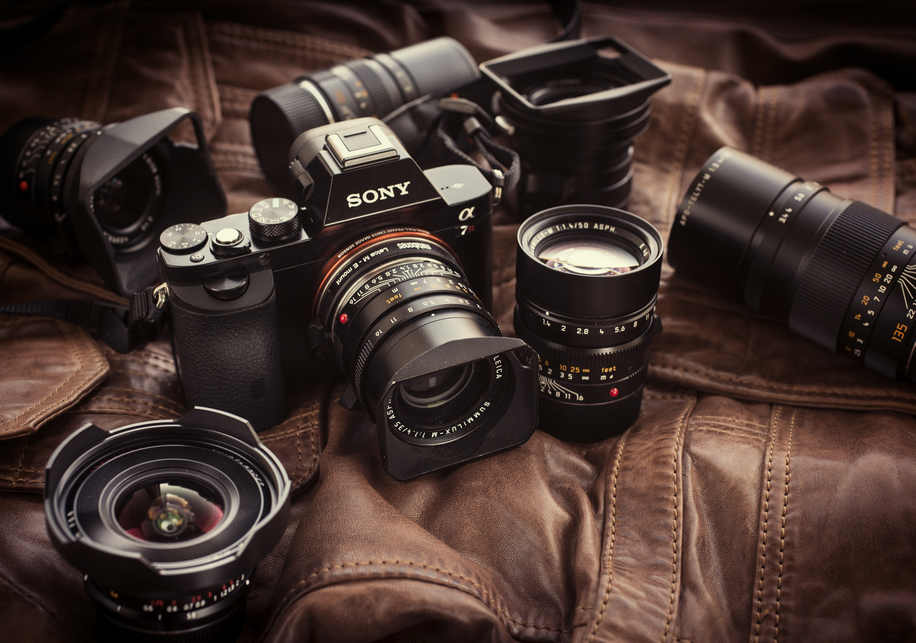
The photo above shows a Sony A7r camera with 36.4MP sensor mounted with a Leitz 35mm Summilux lens. Around it are some of the lenses used for testing in this article, including a 21mm Elmarit, 90mm Elmarit, 28mm Summicron, 50mm Summilux, 135mm APO-Telyt-M, and two Voigtlander super wide lenses, the 12mm (shown above) and 15mm.
You can adapt Leica M lenses, if you have them, using a Leica M to Sony E mount adapter. At $2300 the A7r costs substantially less than a $6950 Leica M 240 camera body, and with 36.4MP sensor thrown in as an added bonus, it has the potential of serving as a second body to a Leica system, or of replacing the expensive Leica all together. The real question we all had is how well the Leica M lenses will perform on the A7r. The reason for concern is that the Leica M camera firmware coupled with sensor design is configured to work with and correct the known aberrations in its own lenses, whereas the Sony A7r is not. This is not such a big concern in medium to long focal lengths, but can become serious with wide angles. The sensor in the A7r also has micro lenses on it to compensate for the short throw of rangefinder lenses, particularly wide and super wide angle lenses. This addition may help somewhat with the use of shorter Leica lenses. We shall see later it this helps.
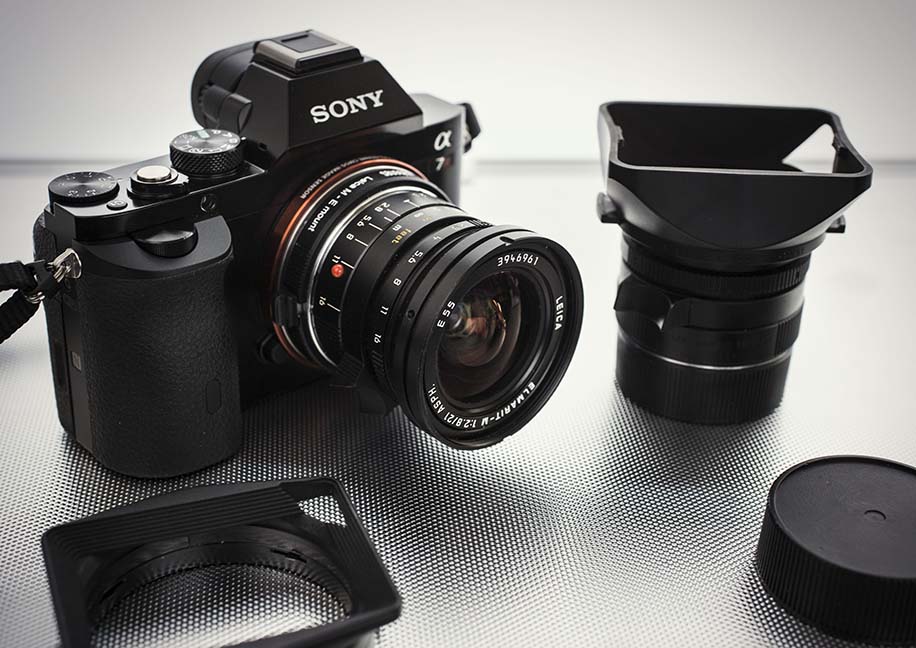
There are a number of M to E adapters available. I tried two and had problems with one of them. Until the A7 series came along, the E-mount was used on smaller APS-C sensor cameras that did not require an opening as large as a full frame camera. One adapter I tried, a Voigtlander, had a black ring inside of it that caused vignetting with the 135mm M lens so I ended up using a Metabones M-E adapter. This worked fine with the full range of M lenses I tried.
The A7r has a 36.4MP sensor, and no covering anti-aliasing filter. It is the same sensor used in the Nikon D800E, and, as you would expect, its performance is close to par with the excellent results from that camera. That may be all that is necessary to say about the image quality from the A7r. The performance of the D800 camera is about as good as things get with current digital technology, which leaves not much to add about the image quality of the A7r. It produces, as you would expect, top notch resolution and very good noise control at high ISO levels, although a camera of this type is not typically intended for shooting situations where noise would be an issue. A high resolution camera is generally used for landscape, fashion, and still life advertising photography, and where very large print output is necessary. These are situations that generally require tripods or strobes, and don’t require high speed captures. For hand-held, low-light, or fast changing subjects, smaller resolution cameras are a better choice. Nonetheless, I did take an ISO test series of images that can be downloaded below.
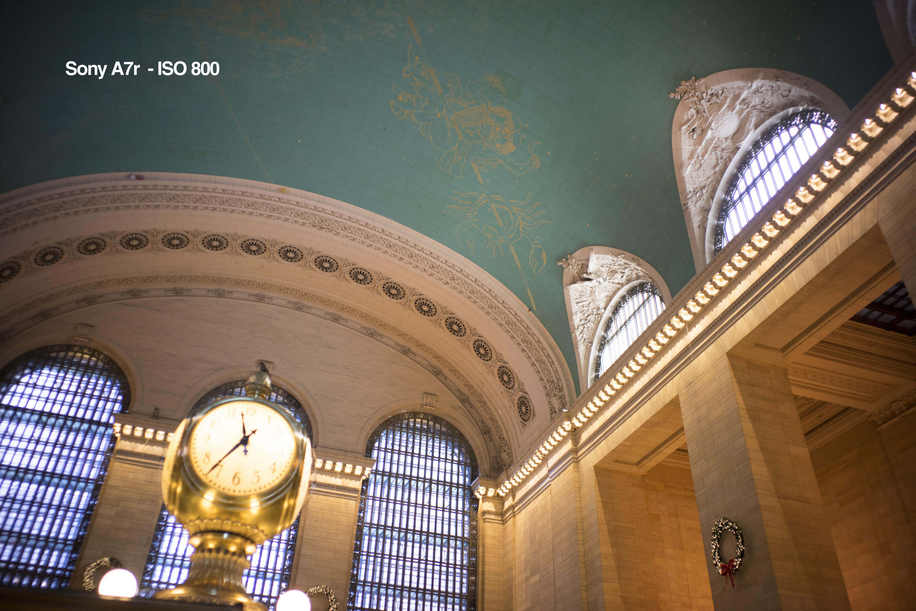
The photo above of Grand Central Station is one of my favorite locations for testing cameras and low-light ISO. The scene is lit with a variety of different light sources, has dark shadows, coupled with bright day light pouring through the windows to demonstrate fringing. This test series was taken with the Leica 28mm Summicron lens. No post-processing was performed on the images. You can readily see the vignetting and color fringing. Download high res version of the various upper ISO samples with the links below. These files came from a 36MP camera so they are quite large.
Click here to download the high resolution version of the ISO 1600 file
Click here to download the high resolution version of the ISO 3200 file
Click here to download the high resolution version of the ISO 6400 file
Just for the fun of it, I photographed this scene at the same time with a Leica M, and was surprised to find that the high ISO noise results from the Leica were better than those from the A7r — not something I would have expected.
I did a comparative example of the A7r vs. the Leica M 240 that is shown in the two side-by-side images of the Chrysler Building below. The same 50mm Summicron lens was used on both cameras. One of the photos was taken with the A7r, the other with the Leica M 240.
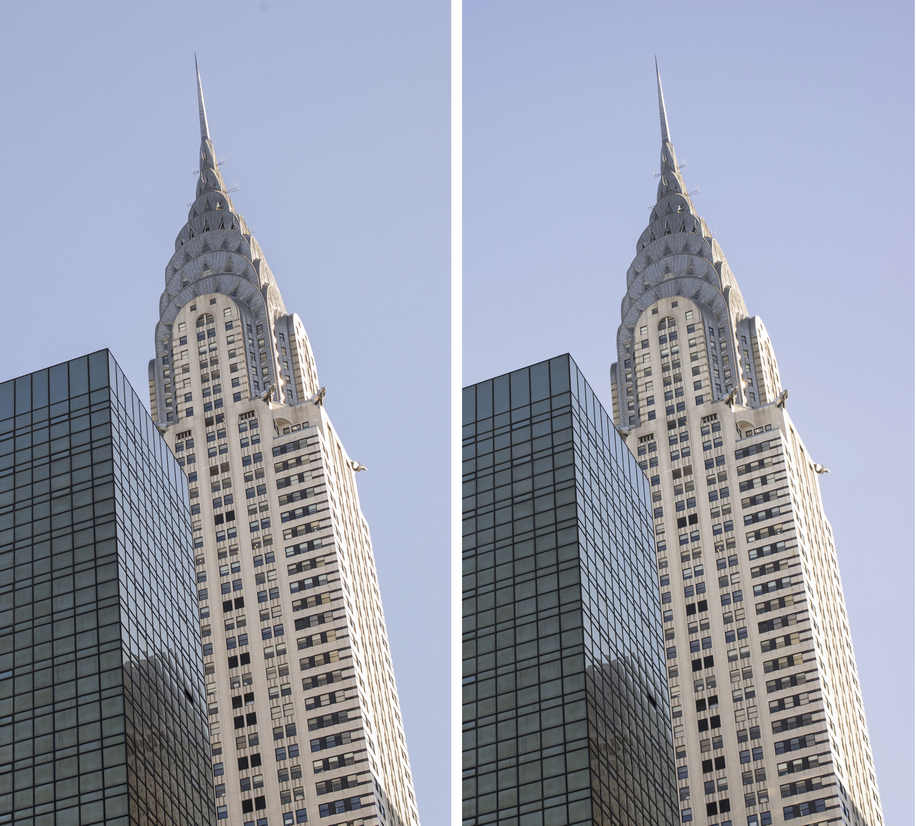
You can download a high res version of the comparative set by clicking here (the Leica image is on the left, A7r on the right). They are full res crops of the originals. The photos are not labeled. The results are given at the very end of this blog post, but first see if you can tell the difference on your own between the 36MP A7r and the 24MP Leica.
Digital cameras with high megapixel sensors, like the A7r and Nikon D800, also demand good shooting techniques. The whole purpose of using one of these cameras is to achieve optimal image results. To get the most from them means using a tripod almost all the time — a lesson I learned the hard way shooting out west with a D800 and occasionally not using a tripod on a very sunny day. Even at high shutter speeds with vibration reduction lenses traces of motion blur softened the shots. The A7r is going to be even more demanding because of its light weight. It doesn’t have the heftiness often needed to dampen vibration, even when on a tripod. Its small size won’t suggest a heavy mount so it might be tempting to lighten your carry load with a lighter tripod. Not a good idea with this camera, if you want to get the most from it.

This picture of the Flatiron Building was done with the Leica 35mm Summilux lens, an excellent performer on the A7r.
The image below shows uncorrected tests of each of the Leica lenses I used with wide open apertures on the A7r. Some very obvious correcting is going to have to be done in post processing to fix the vignette and chromatic aberrations. And, yes, the 15mm Voigtlander, as well as the 12mm, really are as bad as they look. Then again their performance on the Leica M 240 isn’t much better. These lenses need a program like CornerFix to correct their exposure, severe vignetting, and color distortions.
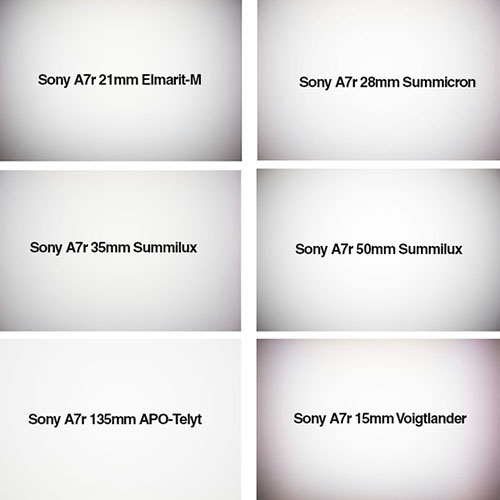
The chart shows that the middle and long focal length lenses of 35mm and longer need only minimal correction. It is when you hit 28mm and wider that the problems begin. This does not mean that exceptional images are not forthcoming from the A7r with Leica lenses. It does mean that some post-processing will be necessary to massage the images. Longer lenses like the 90mm (not shown) and 135mm need practically no corrections.
Color fringing was evident in pretty much all shots I did with the A7r and Leica lenses, but less so with the longer focal lengths.
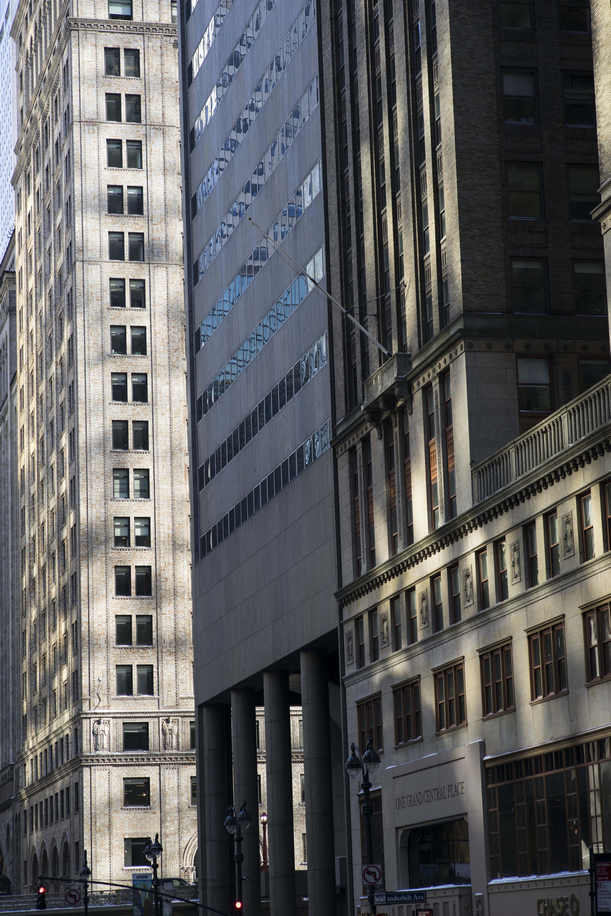
This photo was taken with the Leica 90mm Emarit-M lens, one of the better performers on the A7r. This is an unretouched shot, and you can see the typical color fringing that is present on the left, high contrast edges and corners. Download a full res version of this shot by clicking here.
One thing I noticed immediately about the A7r shutter is its noisy shutter, especially when compared to a Leica or Fuji X camera. You are not going to be doing any surreptitious shooting with the A7r in quiet environments. It has a definite double-clicking sound that is sharp and noticeable. The standard A7 has a different, more muffled sounding shutter with a single click that is more like what you would expect.

One of the best performing Leica lenses on the A7r was the Leica 135mm f/3.4 APO-Telyt-M used for the shot above.
Focus peaking, especially when coupled with image magnification, has become a very helpful feature with manual focus lenses. On the A7r it can be set to varying intensities and color preferences. I have grown to really like the feature and found it very accurate on the Leica M 240 and Fuji X cameras. On the A7r I found the peaking to be too deep to always be accurate, even after making various adjustments to the intensity setting. The peaking would indicate focus, but sometimes it was tack sharp while the very next frame was off just a bit with the result that I lost a disproportionate number of sequential shots.
The A7r auto color interpretation was very good, although I did not have an opportunity to try it out in portraiture.
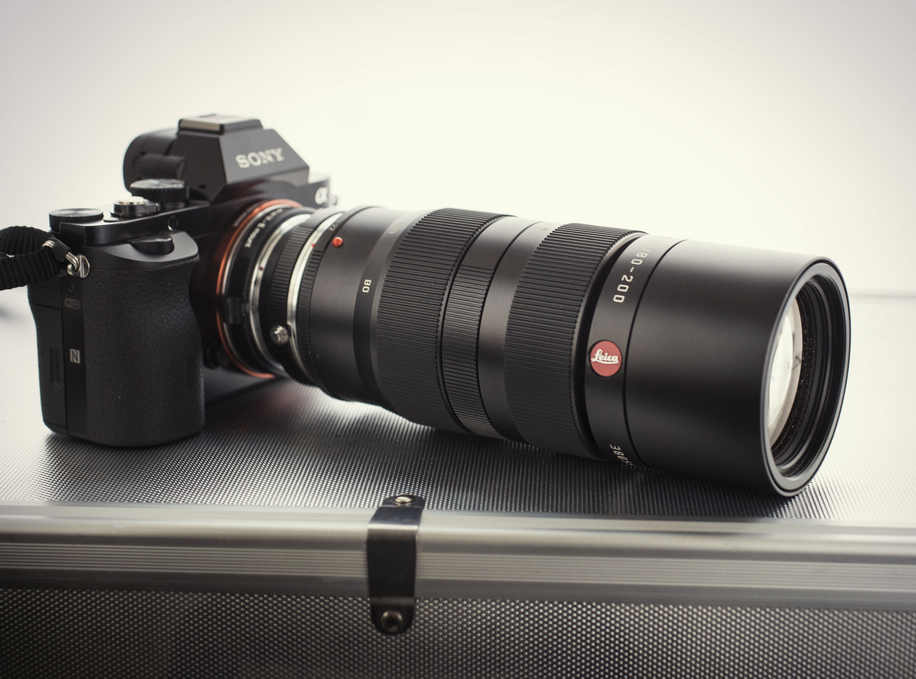
In the photo above two adapters were used to mount a Leica 80-200mm Elmarit-R zoom on the A7r — a Leica R to Leica M adapter in conjunction with a Metabones M to Sony E adapter. This combo was used to take the two night shots below.

Battery life on this camera is the worst I have ever witnessed. Sony does have an add-on battery accessory that will rectify this problem, but that is only negating what the camera set out to be, namely a very compact system. Having to add or carry spare batteries to make up for performance issues is a bit like sweeping dust under the carpet.
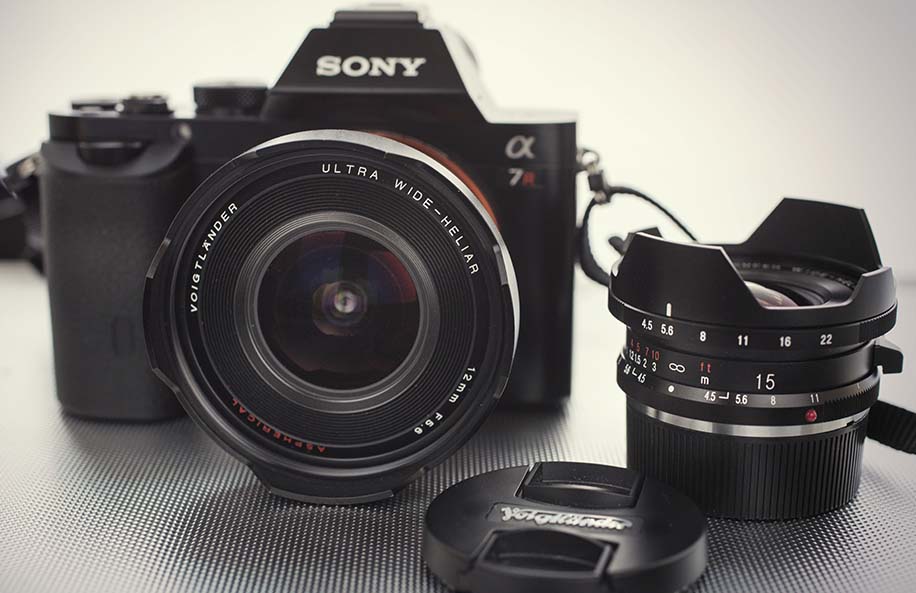
The photo above shows two super-wide angle Voigtlander lenses with Leica M mount, the 12mm on the camera, and 15mm next to it. Frankly, these two super-wide Voigtlander lenses have terrible aberrations on digital cameras, but if you need a 12mm lens, you don’t have many other options, and you’re going to have to put up with beating the image into submission using considerable post-processing.
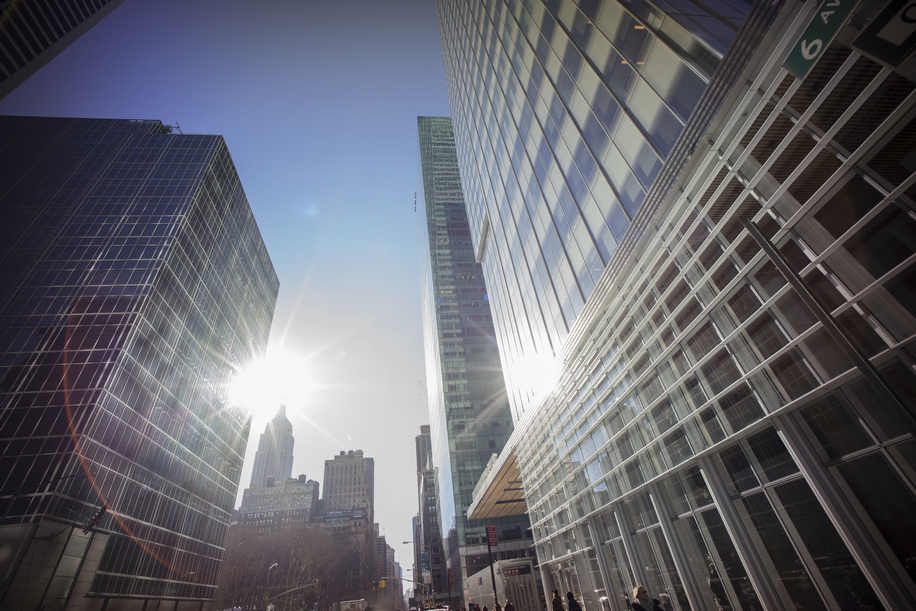
The photo above was taken with the Voigtlander 15mm f/4.5 lens on the A7r. Heavy vignetting and edge discoloration are a typical characteristic of this lens. As mentioned above, all of this can be corrected by running the image through CornerFix software, if you don’t mind spending the effort. Once CornerFix has been set up for a particular lens, it is quite easy to use.
Below is the same scene taken with the Leica 21mm f/2.8 Elmarit-M ASPH, one of my favorite super wide angle lenses. No post-processing was added to the two shots. Results from the 21mm are very good, especially considering how wide it is.
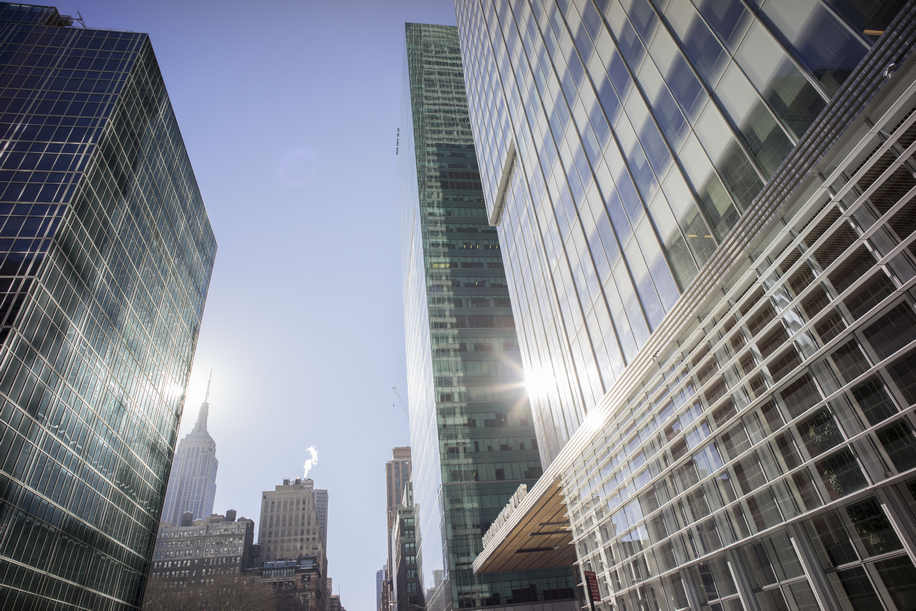
In the scene below the setting sun lit the smoke from behind while the foreground buildings remained in deep evening shadow, a difficult situation for any camera. the A7r pulled it off with excellent dynamic range and accurate color rendition and requiring only modest post-processing to balance out the light to dark areas.
Conclusion:
The crux of the situation is that the Sony A7r was not made to specifically accept and harmonize with Leica M lenses. Nothing wrong with that, however a Leica M camera does have the built-in capability to sync with its own lenses and it does so beautifully. Considering the resolution differences in their sensors, an A7r when mounted with its best Zeiss optics, and given proper handling technique should out-pace a similar Leica combo. In my experiences a Leica M 240 coupled with Leica M lenses performs better than the sum of its parts. I suspect that in an actual comparison of images from the two cameras it will be difficult to distinguish one from the other.
A downside of using the A7r with Leica lenses, is that you must be prepared to compensate for the mis-match by having to perform some post-processing corrections, particularly on shorter focal lengths.
From a point of view of size the fast aperture Leica lenses are actually more proportionate to the very small A7r camera body than its own lenses are. Sony had to make a serious compromise when it tried to have the smallest full frame interchangeable camera body and couple it with modern, auto-focus, stabilized lenses. The Zeiss lenses made for the camera are inherently heavy and bulky. To keep the size of the lenses to a level where they don’t overpower the diminutive A7r body, they were given slow apertures. The two zooms, for instance, are f/4 lenses. The Zeiss prime lenses that do have fast apertures are going to be much bigger and heavier than equivalent Leica M focal lengths.
The A7r is a very specialized camera, and I am not sure its formula — a full frame sensor in such a small camera body — works. If I really need such high resolution, I feel like I have to pay my dues and go with the heavier, but more stable (i.e.vibration resistant) Nikon D800. If I want small and compact, I prefer an actual Leica M with its own lenses, or a Fuji X camera with its smaller lenses kit.
Unless you really, really need the 36.4MP the A7r delivers for making huge prints, the A7 may be a better choice for a small, full frame camera. At 24.5MP it is no slouch. It has a better shutter, faster burst speed (5fps vs 4fps for the A7r), and better auto-focus combining both phase-detection and contrast detection. It is also more forgiving when hand-held.
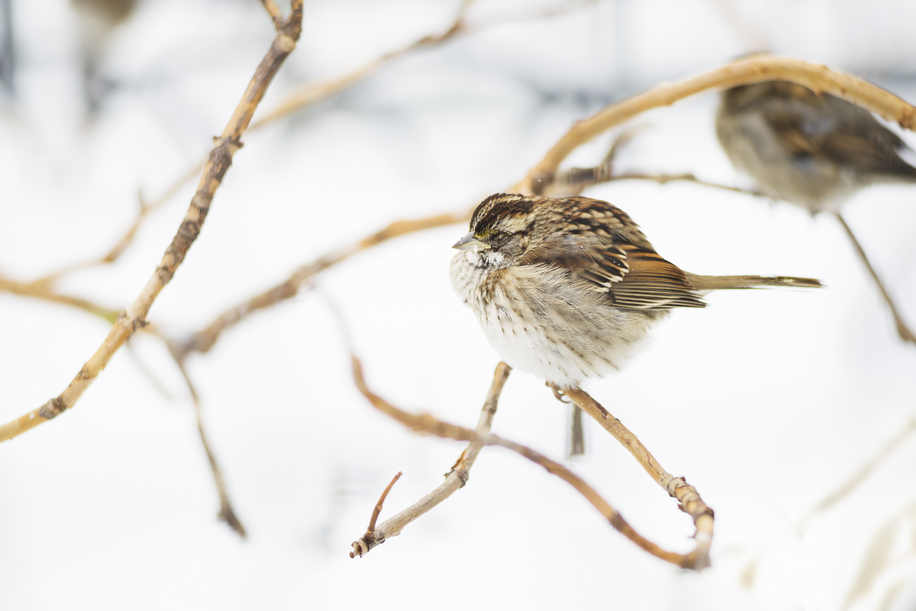
The photo above of birds in the snow was taken with the Leica 135mm APO-Telyt-M at f/3.4.
My main purpose in this experiment was to determine if the A7r could serve as a higher resolution substitute, or act as an extra body for a Leica M system. In the end I concluded that the results, while marginally better from the higher res A7r sensor, were not enough to justify my using this camera instead of my Leica M 240. The Leica worked better and with considerably less post-processing hassle using its native lenses — all of which tended to negate any benefits the larger 36MP A7r sensor might have. If I had to acquire a less expensive spare body to go with a Leica M, I think I would opt for the features of the A7 over the A7r and pocket the $600 price difference.
Check also his Classic Cameras 2014 calendars (more info available here).
If you have an interesting idea for a guest post, you can contact me here.
